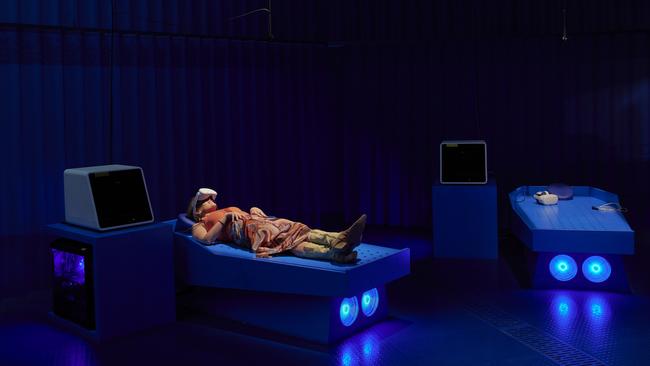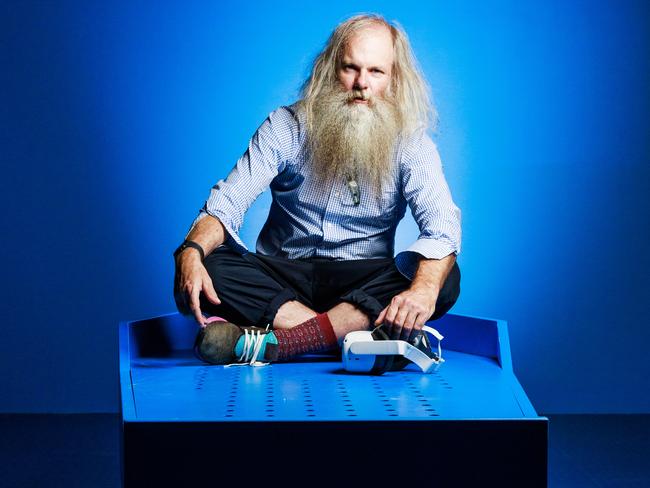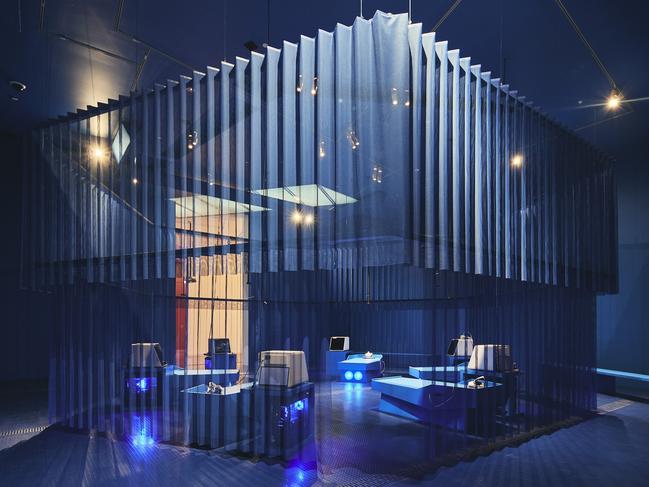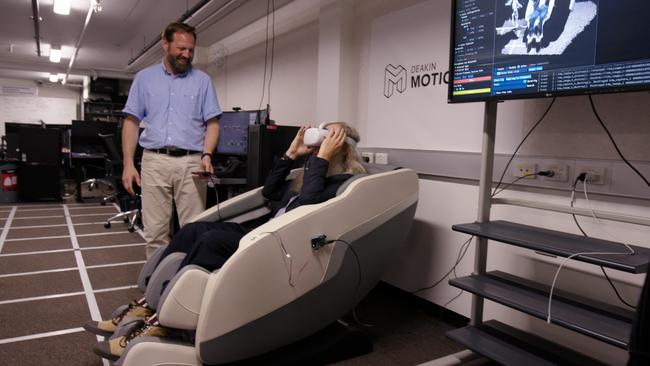My experience of the ‘death simulator’ at Melbourne Now exhibition
A Melbourne art installation that simulates cardiac arrest and brain death has gained international attention. Here’s what it’s like to experience.

Victoria
Don't miss out on the headlines from Victoria. Followed categories will be added to My News.
Watching doctors attempt to revive me on a hospital bed. Feeling my pulse weaken. Hearing the sound of flat lining.
This confronting experience marks the beginning of Melbourne’s very own “death simulator” – a virtual reality-based art installation that allows participants to experience a “de-escalation of life”, from cardiac arrest to brain death.
Australian artist Shaun Gladwell created the work, called Passing Electrical Storms, in collaboration with Deakin University’s Motion Lab for the National Gallery of Victoria’s free Melbourne Now exhibition.
It has since gained international attention, including from media outlets like the New York Post, the UK’s Evening Standard and India’s Republic World, while TikTok videos documenting the experience have racked up millions of views.
I had to try it.
WATCH: Artist Shaun Gladwell explains how the ‘death simulator’ works
RELATED: The must-see artworks at the free Melbourne Now exhibition

It seems a lot of people are feeling the same allure – when I arrive at The Ian Potter Centre in Federation Square to experience the artwork, there is a line outside the replica hospital room where it’s housed.
Before I can participate, a NGV staff member asks that I read a pamphlet warning me the 10-minute-long experience will have “an affecting, out-of-body’ quality”, may be “disorientating” and is only recommended for those aged 12 and above.
“The work guides participants through a simulated de-escalation of life, from a slowing pulse to its flattening,” it reads.
“Participants then experience universes both within and beyond the body.”

I agree to continue and lay down on a replica hospital bed, where a pulse monitor is placed on my finger and a VR headset over my eyes.
Gladwell said he expected participants to each “have a different response” to his work – “including not even wanting to do it, which is, I think, valid”.
The NGV describes the work as simultaneously “meditative and unsettling”. That’s a pretty spot on summary of my experience.
The initial image that flashes up on my VR goggles is a holographic mirror image of myself lying on a hospital bed. Two doctors then enter and try to resuscitate me as the bed I’m actually lying on vibrates in line with my pulse.
This is the unsettling part, providing a glimpse into what my final moments could look like.
Next comes the meditative element – my body floats up past the doctors, out of the hospital, out of the Earth, past a satellite, the sun and the moon and into the depths of the universe.

My body then disappears and I experience a bizarre inner-body experience, travelling all the way into a subatomic particle until finally, the goggles show only darkness.
Gladwell said the intention of this journey was to replicate “our experience of consciousness once our heart stops working”.
“It looks at certain processes that (start to) fade away in the body,” he said.
“That process has been measured in scientific ways, through … instruments like the electroencephalograph. This project is trying to visualise that process.
“This work is really about a kind of sense of how big the universe is, based on current scientific knowledge, and how brief life (is).”
I walked away from the experience with this notion, and my own mortality, at the front of my mind. You’d be hard pressed to find a better perspective check, or a more compelling art exhibit.
Try Passing Electrical Storms for free at The Ian Potter Centre: NGV Australia until August 20.ngv.vic.gov.au/melbourne-now



